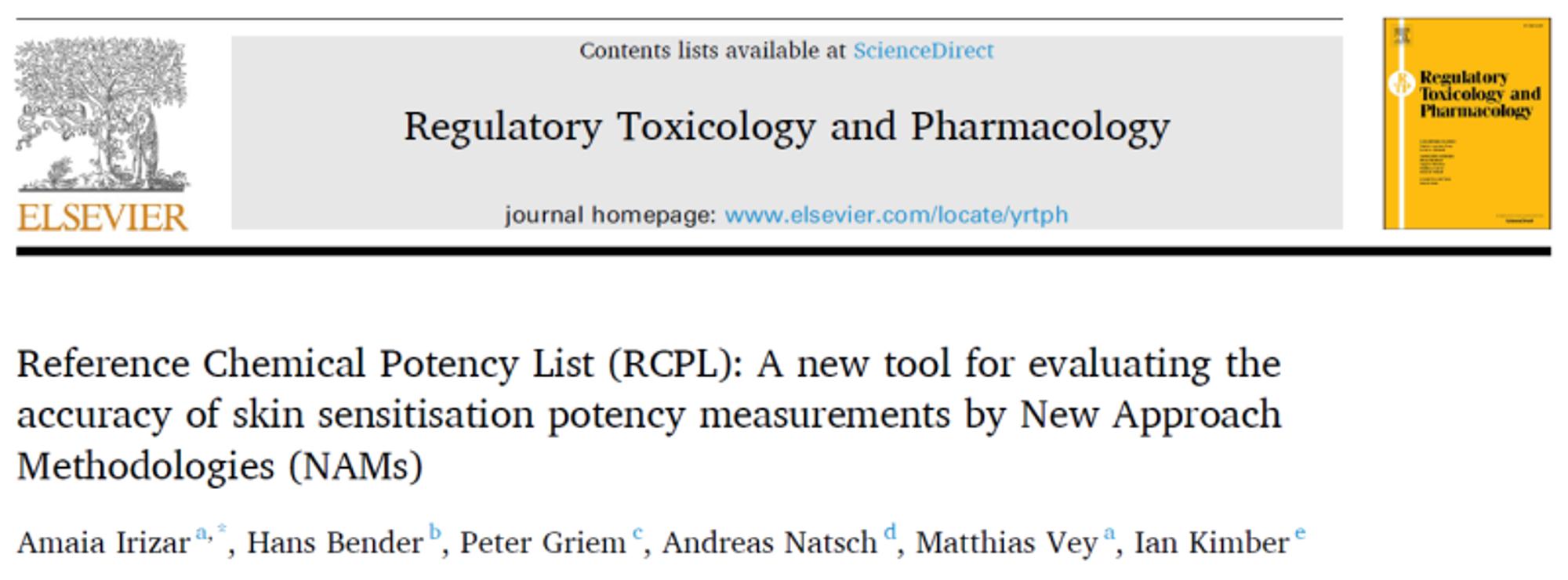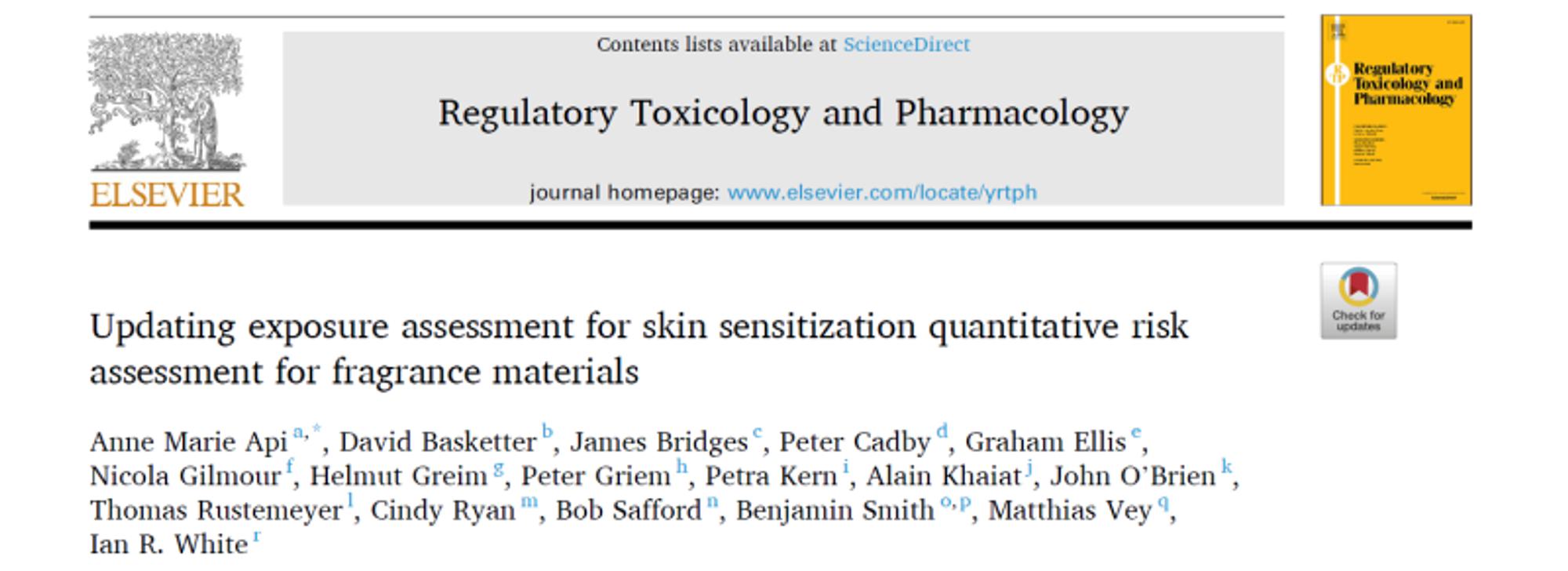Reference Chemical Potency List (RCPL): A new tool for evaluating the accuracy of skin sensitisation potency measurements by New Approach Methodologies (NAMs)

Considerable progress has been made in the design of New Approach Methodologies (NAMs) for the hazard identification of skin sensitising chemicals. However, effective risk assessment requires accurate measurement of sensitising potency, and this has proven more difficult to achieve without recourse to animal tests.
One important requirement for the development and adoption of novel approaches for this purpose is the
availability of reliable databases for determining the accuracy with which sensitising potency can be predicted. Some previous approaches have relied on comparisons with potency estimates based on either human or animal (local lymph node assay) data. In contrast, we here describe the development of a carefully curated Reference Chemical Potency List (RCPL) which is based on consideration of the best available human and animal data.
The RCPL is comprised of 33 readily available chemicals that span a wide range of chemistry and sensitising potency, and contain examples of both direct and indirect (pre- and pro-) haptens. For each chemical a potency value (PV) was derived, and chemicals ranked according to PV without the use of potency categories. It is proposed that the RCPL provides an effective resource for assessment of the accuracy with which NAMs can measure skin sensitising potency.
To download this publication, please click here.

